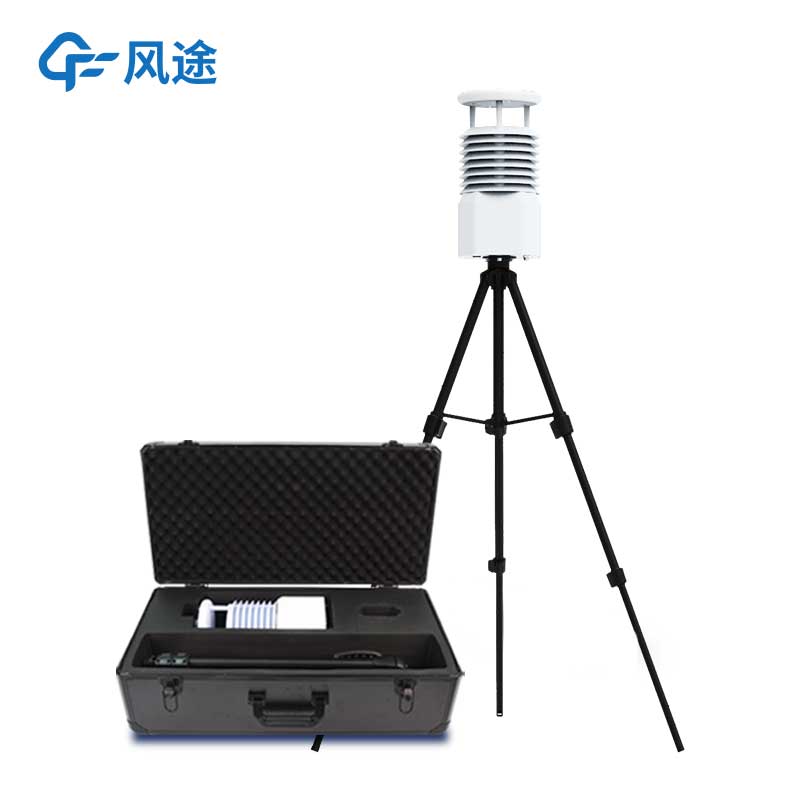Shandong Fengtu IOT Technology Co., Ltd
Sales Manager:Ms. Emily Wang
Cel,Whatsapp,Wechat:+86 15898932201
Email:info@fengtutec.com
Add:No. 155 Optoelectronic Industry Accelerator, Gaoxin District, Weifang, Shandong, China

Sales Manager:Ms. Emily Wang
Cel,Whatsapp,Wechat:+86 15898932201
Email:info@fengtutec.com
Add:No. 155 Optoelectronic Industry Accelerator, Gaoxin District, Weifang, Shandong, China
time:2025-09-09 09:48:55 source:Weather Station viewed:169 time
The Wireless Weather Station not only enables high-precision meteorological monitoring but also flexibly adapts to different application scenarios. Its core highlight lies in the integrated composite meteorological sensor it is equipped with. This sensor has undergone professional calibration and optimization, ensuring high accuracy of all measured meteorological parameters. Unlike traditional decentralized sensors, which are prone to issues such as data asynchrony and inaccuracy, it stably guarantees the reliability of meteorological data and can meet the requirements for meteorological monitoring data accuracy in any scenario.
In terms of data collection and transmission, it is also highly convenient. Adopting an IoT (Internet of Things) architecture, it can transmit the collected data in real time via 4G wireless communication. There is no need for complex network cable installation—even in remote areas or during mobile monitoring, meteorological data can be quickly and stably transmitted to the backend platform. Staff can view the monitoring data at any time using terminal devices, allowing them to promptly grasp changes in meteorological conditions.
It can monitor a comprehensive range of meteorological parameters, including atmospheric temperature and humidity, air pressure, rainfall, wind speed, and wind direction, all of which can be continuously monitored simultaneously. These data cover the core content of meteorological monitoring and can provide comprehensive and detailed meteorological data support for research and practical applications in any field.
It is widely used in agriculture, energy, and coastal areas. In agriculture, it provides precise meteorological data for crop cultivation, serving as a reference for farmers when arranging irrigation, fertilization, and disaster prevention. In the energy sector, projects such as wind power generation and solar energy utilization require information on wind speed and sunlight conditions; the station can provide relevant meteorological information to help improve the efficiency of energy development and utilization. In coastal areas, it can monitor local meteorological changes in real time, providing important references for both offshore operations and coastal protection efforts.
Additionally, it has many practical features:
Monitoring data can be output in real time, allowing users to instantly understand the current meteorological conditions when needed.
The data is reliable, eliminating concerns about errors when conducting subsequent analysis and making decisions.
The device itself is lightweight, making it easy to carry and use for mobile monitoring.
It is made of durable materials, ensuring long-term use in any environment.
It has low power consumption, saving significant energy costs.
With an integrated and compact design, it requires no complex operations during installation and can be set up quickly, making it extremely easy to use.

The Visibility and Present Weather Sensor is an automatically continuous monitoring sensor, whose main monitoring targets include visibility, precipitation conditions, and specific types of visibility-impairing weather phenomena.This device works based on the forward scattering principle. It activel...
Meteorological emergency refers to a series of emergency response measures taken in the face of sudden meteorological disasters or events that may trigger meteorological disasters. In the current context where natural disasters occur frequently, meteorological emergency is of vital importance. Torre...
In the current era when the concepts of ecotourism and healthy living are widely spread, natural oxygen bars have become popular leisure destinations for people. As a key facility for measuring and maintaining the ecological quality of these areas, the Environmental Monitoring Station demonstrates t...
In ecologically beautiful areas, such as forests, mountain streams, rivers, lakes, seas, and around waterfalls, people often feel that the air is particularly fresh. This is mainly due to the relatively high content of negative oxygen ions in the air in these places. Negative oxygen ions are oxygen...